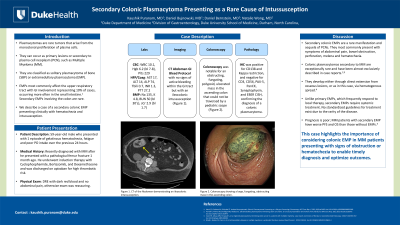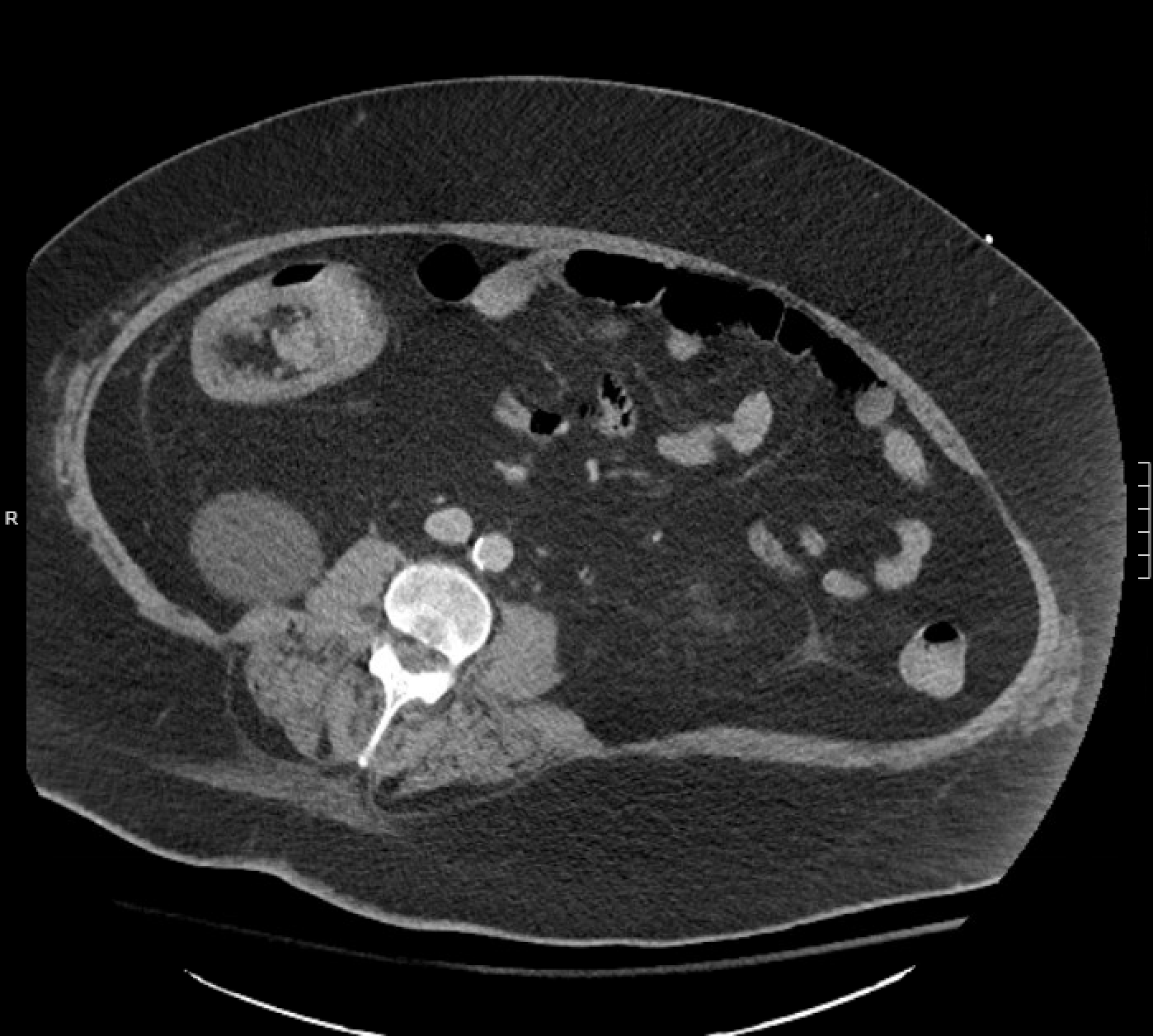Tuesday Poster Session
Category: Colon
P4735 - Secondary Colonic Plasmacytoma Presenting as a Rare Cause of Intussusception

.jpg)
Kaushik Puranam, MD
Duke University School of Medicine
Durham, NC
Presenting Author(s)
1Duke University School of Medicine, Durham, NC; 2Duke University Health System, Durham, NC; 3Duke University Hospital, Durham, NC
Introduction:
Plasmacytomas are rare tumors arising from the monoclonal proliferation of plasma cells. They are classified as either solitary plasmacytoma of bone (SBP) or extramedullary plasmacytoma (EMP) and may occur as primary lesions or secondary to a plasma cell disorder, such as multiple myeloma (MM). EMPs most commonly affect the upper respiratory tract while gastrointestinal involvement is uncommon. Colonic EMPs, especially secondary cases, are exceedingly rare. We describe a case of secondary colonic EMP presenting clinically with hematochezia and intussusception.
Case Description/Methods:
A 59-year-old male with a new diagnosis of MM, recently initiated on induction chemotherapy and apixaban, presented with a single episode of gelatinous hematochezia. On physical exam, the rectal vault revealed dark red blood. Laboratory findings were notable for a hemoglobin of 6.2 g/dL (baseline 7–8), platelets 229 ×10⁹/L, serum creatinine 2.9 mg/dL (baseline 1.7), and INR of 1.3. Contrasted CT did not reveal active GI bleeding but identified ileocolonic intussusception in a location where wall thickening of the cecum was noted on a prior CT, raising concern for a malignant lead point (Figure 1). His last colonoscopy was performed three years prior, with two sessile serrated polyps removed in the transverse colon.
On hospital day 2, colonoscopy revealed an obstructing, fungating, polypoid, ulcerated mass in the ascending colon that could not be traversed with a pediatric colonoscope (Figure 2). Biopsies of the mass demonstrated histopathological features consistent with a plasma cell neoplasm. Immunohistochemistry was positive for CD138 and Kappa restriction, and negative for CD3, CD56, PAX-5, PanCK, Synaptophysin, and EBER CISH, confirming the diagnosis of a colonic plasmacytoma. The patient subsequently received one fraction of radiation to the mass, followed by alternative induction chemotherapy regimen including Daratumumab, Lenalidomide, Bortezomib, and Dexamethasone.
Discussion:
Secondary colonic EMP is a rare manifestation and sequela of MM, often indicating aggressive disease and a poor prognosis. It develops either through direct extension from osseous lesions, or as in this case, via hematogenous spread. Unlike primary EMPs, which frequently respond to local therapy, secondary EMPs require systemic treatment. This case highlights the importance of considering colonic EMP in MM patients presenting with signs of obstruction or hematochezia to enable timely diagnosis and optimize outcomes.


Disclosures:
Kaushik Puranam, MD1, Daniel Bujnowski, MD2, Daniel Bernstein, MD3, Natalie Wong, MD2. P4735 - Secondary Colonic Plasmacytoma Presenting as a Rare Cause of Intussusception, ACG 2025 Annual Scientific Meeting Abstracts. Phoenix, AZ: American College of Gastroenterology.
